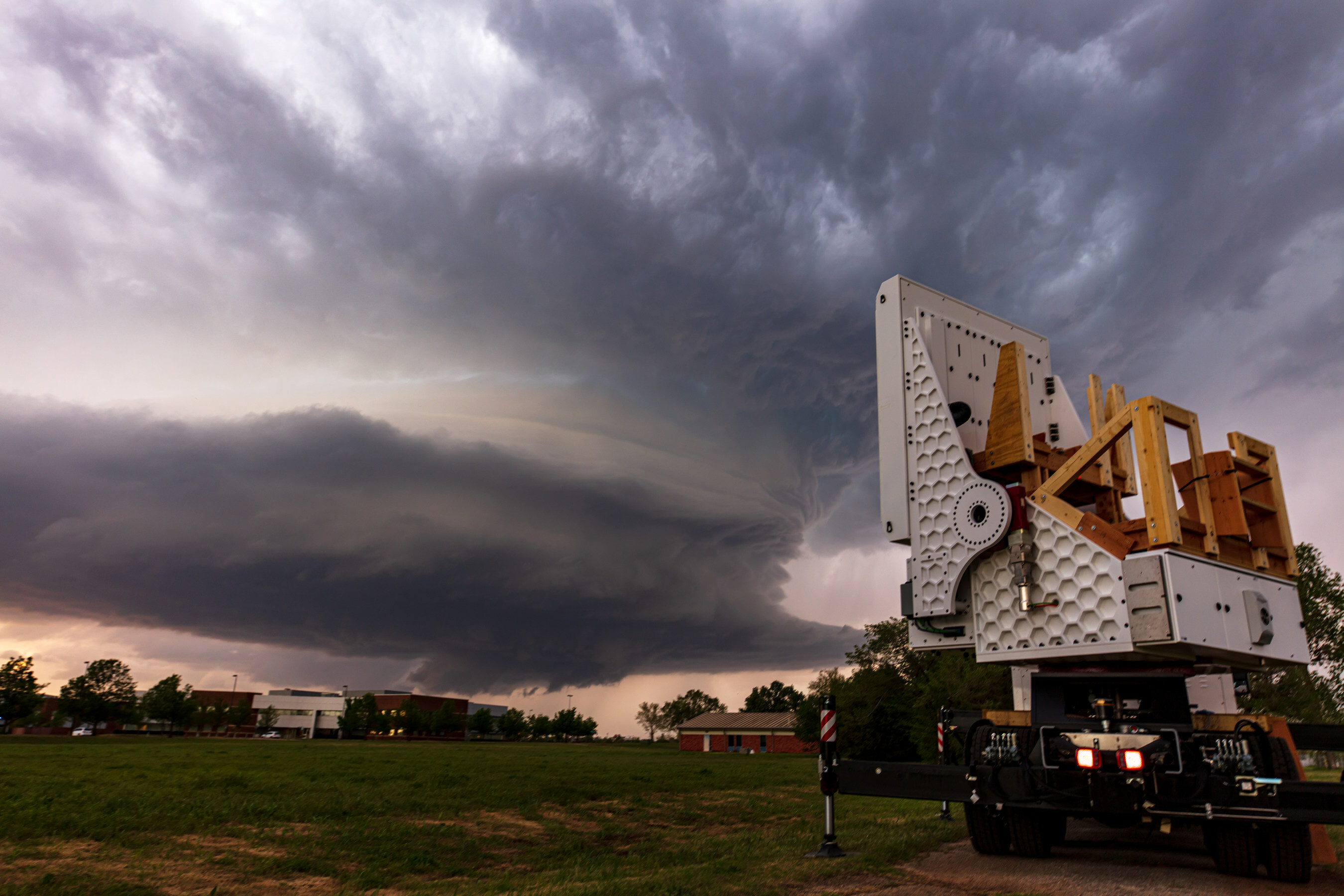
"We now have an extremely advanced mobile radar system that can be sent into the field to gather data on extreme weather events," Robert Palmer, executive director of the OU Advanced Radar Research Center, said.
The Horus system is used to observe many kinds of weather events, from intense rain, damaging winds, hail, lightning, and tornadoes. By positioning the radar near storm systems, the ARRC team can capture high-resolution data that no one in the world has ever seen.
"This ARRC team is developing amazing technology that is going to change the future of weather observations. I'm so proud of what OU's radar program is doing," said OU Vice President for Research and Partnerships Tomás Díaz de la Rubia.
The current configuration of the Horus radar consists of up to 1,600 individual radiating elements mounted on a truck for mobile use that can be deployed to scan the skies in any weather condition.
One of the primary advantages of the mobile Horus radar is its ability to get much closer to storms. In doing so, researchers can increase the resolution and data quality, capturing terabytes of data in minutes. And, because of weather-processing algorithms, Horus can produce actionable information that will help scientists understand severe weather formation.
The factors that make the Horus system superior are the speed at which it can scan the sky and its adaptability. Compared to Doppler radar, Horus is changing the game in weather observations. Learn more at ou.edu/research
SOURCE University of Oklahoma
No comments:
Post a Comment